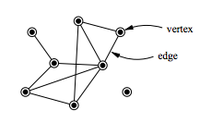
Photo from wikipedia
Although the knowledge and technology of performance-based earthquake engineering have rapidly advanced in the past several decades, current seismic design codes simply ignore the effect of aftershocks on the performance… Click to show full abstract
Although the knowledge and technology of performance-based earthquake engineering have rapidly advanced in the past several decades, current seismic design codes simply ignore the effect of aftershocks on the performance of structures. Thus, the present paper investigated the effect of aftershocks on seismic responses of multispan reinforced concrete (RC) bridges using the fragility-based numerical approach. For that purpose, a continuous girder RC bridge class containing 8 bridges was selected based on the statistical analysis of the existing RC bridges in China. 75 recorded mainshock-aftershock seismic sequences from 10 well-known earthquakes were selected in this study. In order to account for the uncertainty of modeling parameters, uniform design method was applied as the sampling method for generating the samples for fragility analysis. Fragility curves were then developed using nonlinear time-history analysis in terms of the peak curvature of pier column and displacement of bearings. Finally, the system fragility curves were derived by implementing Monte Carlo simulation on multinormal distribution of two components. From the results of this investigation, it was found that, for the RC continuous bridges, the influence of aftershocks can be harmful to both bridge components and system, which increases both the component fragility of the displacement of bearings and seismic curvature of pier sections and system fragility.
Journal Title: Mathematical Problems in Engineering
Year Published: 2018
Link to full text (if available)
Share on Social Media: Sign Up to like & get
recommendations!